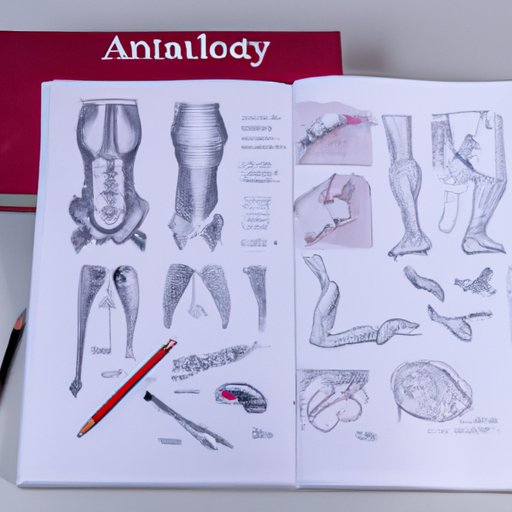
Introduction
For many people, drawing human anatomy is a daunting task. The human body is complex, with dozens of muscles, bones, and other structures that work together to create movement and form. However, with some basic knowledge and the right tools, anyone can learn how to draw anatomy with confidence and accuracy.
In this article, we provide a step-by-step guide to mastering the art of drawing human anatomy. We also share tips for using visual aids, maintaining a sketchbook, choosing the right tools, and evaluating educational resources. By the end of this article, you will have the foundation you need to create engaging and realistic artwork.
Step-by-Step Guide
The first step in drawing anatomy is to understand basic shapes and movement lines. This will help you create a solid foundation for your drawing and ensure that you capture the overall form of the body accurately. Once you have a solid foundation, you can begin to break down each part of the body, detailing the muscles and bone structure.
Each step of the drawing process requires careful observation and attention to detail. We recommend working from reference images or live models, as this will help you develop a deeper understanding of the human form.
Use Visual Aids
Visual aids, such as high-resolution images or illustrations, can be incredibly helpful when drawing anatomy. These images can help you understand the three-dimensional structure of the body, as well as the relationships between different muscle groups and bones.
Clear labeling and organization are essential when using visual aids. Make sure that each structure is clearly labeled and that the images are organized in a logical manner. This will help you better understand the relationships between different structures and make it easier to apply this knowledge to your own artwork.
Sketchbook Journal
A sketchbook is a great tool for practicing new drawing techniques and keeping track of your progress. Keeping a regular journal will help you stay motivated and consistent in your practice. Setting goals and monitoring progress is also important for tracking growth and identifying areas where you need to improve.
Tools
There are numerous tools available for drawing anatomy, including pencils, charcoal, ink, and digital tools. The key is to choose the tools that work best for you and your artistic goals. Anatomy books and online tutorials are also great resources for beginners, as they provide a wealth of information on different techniques and approaches to drawing anatomy.
Tips and Tricks
Adding texture and depth to artwork is one of the most challenging aspects of drawing anatomy. However, there are several techniques you can use to add interest and depth to your drawings. Shortcuts and doodling habits can also be useful for improving workflow and creativity.
Resources
There are many resources available for learning how to draw anatomy, from anatomy books and online tutorials to art classes and mentorship programs. When selecting resources, it’s important to consider your learning style and goals, as well as the expertise and qualifications of the instructor.
Coaching
In addition to formal educational programs, coaching and mentorship can be incredibly valuable for improving your anatomy drawing skills. There are many programs and opportunities available for artists at all levels, from beginners to advanced practitioners. It’s important to choose a mentor or course that aligns with your goals and provides the support and guidance you need to improve your skills.
Conclusion
Drawing human anatomy can be challenging, but with the right techniques, tools, and resources, anyone can learn how to create accurate and engaging artwork. In this article, we have provided a step-by-step guide to drawing anatomy, along with tips for using visual aids, maintaining a sketchbook, choosing the right tools, and evaluating educational resources. We encourage readers to practice regularly, seek out educational opportunities, and utilize resources to improve their skills.




